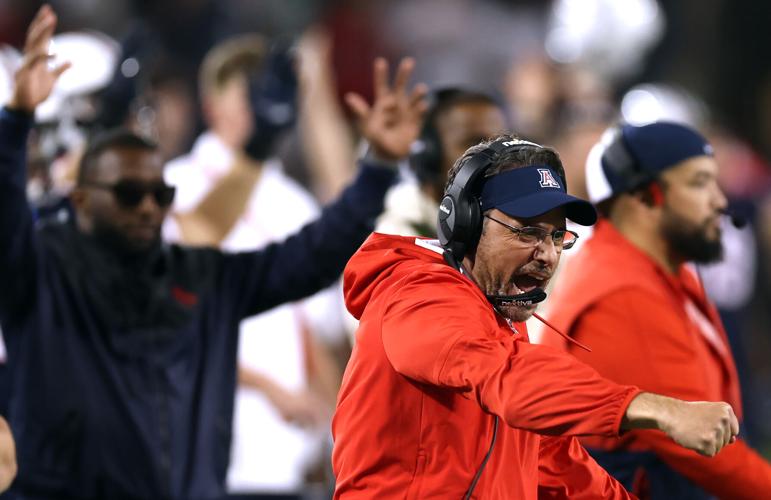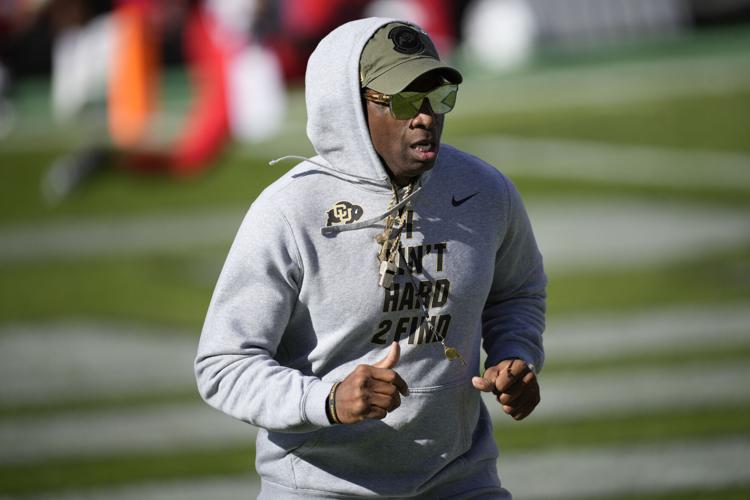When it comes to coaching, Jedd Fisch is a progressive.
Heтs relatively young (47 years old). He goes for it on fourth down. He runs a sophisticated, pro-style offense. And he exchanges notes with some of the NFLтs brightest young minds, including Sean McVay and Zac Taylor.

Michael LevТ is a senior writer/columnist for theТ УлшжжБВЅ,Ь§УлшжжБВЅ.comЬ§ВЙВдЛхЬ§The Wildcaster.
When it comes to program building, Fisch is a traditionalist.
He believes in good, old-fashioned high school recruiting. He has laid the foundation for success at УлшжжБВЅ primarily with prep players. He has used the transfer portal judiciously. And he isnтt changing anytime soon.
тOur job as college coaches is to recruit high school players and develop high school players,т Fisch said Wednesday after the Wildcats added 16 high school players, one junior-college recruit and three transfers via the portal on early signing day. Only three programs in the 16-team Big 12 had fewer incoming transfers as of Thursday afternoon.
People are also reading…
Fisch continued.
тAnd then if you need to fill a need,т he said, тyou go ahead and fill a need with a portal player т a free agent, so to speak.т

УлшжжБВЅ coach Jedd Fisch, shown during the Wildcatsт 2023 victory over UCLA, believes in building a program the old-fashioned way: through high school recruiting and player development.
Fisch is doing it the right way. The transfer portal has become increasingly influential, no doubt. Some programs (Ole Miss, Louisville) have succeeded as тportal schools.т But the best, most consistent programs do it the old-fashioned way: They recruit, and they develop.
Fisch, who has coached extensively in the NFL, equated roster building in college football to what goes on at the highest levels of the sport. The best NFL organizations rely primarily on the draft (recruiting) to form the nucleus of their teams. They supplement their rosters via free agency (the portal).
It isnтt a perfect apples-to-apples comparison. The NFL has different dynamics т namely, a collective bargaining agreement. The draft is the best source of cheap, young labor. Football players also, for the most part, peak in their 20s. You can get established starters via the portal. Free agents are often past their prime.
Portal advocates cite risk reduction as a leading reason to go that route. Why invest in high school players т the majority of whom are long-term projects т when you can snag proven college veterans?
Fischтs director of player personnel, Matt Doherty, believes the exact opposite is true. Transfer-portal recruiting is like speed dating; you have, at most, a few weeks to vet players. In some cases, it might be just a few days or even a few hours.
High school recruiting is a years-long process. Over time, coaches can learn what truly matters about a player т his character. And the player can get a taste of what the program is about through multiple conversations and visits.
тItтs the reduction of uncertainty,т Doherty said in support of high school recruiting. тYouтve got a longer, more drawn-out timeframe to recruit and evaluate the players on the high school side. So you understand what youтre bringing into your building, what youтre adding to your culture and whether or not thatтs going to appreciably improve a given position room.
тWith the portal stuff, obviously, itтs a more truncated evaluation process.т
Doherty said that even a deliberate evaluation process т say, grading every returning starter on every team who has at least one additional year of eligibility т wouldnтt bridge the gap. Thereтs no substitute for taking the time to get to know someone and their family.
тEven if you did that in the most organized of fashions,т Doherty said, тyouтre not able to get to know the player but for that small two-week window, that frenzy thatтs taken place.т
УлшжжБВЅ hasnтt ignored the transfer portal under Fisch. You canтt just blow it off and hope to compete at the highest levels. .
But it shouldnтt be the primary tool used to build a roster.
The Wildcats have several transfers who are key contributors to the 14th-ranked team that will face No. 12 Oklahoma in the Valero Alamo Bowl next week. Three offensive starters т pass catchers Jacob Cowing, Montana Lemonious-Craig and Tanner McLachlan т are transfers, as is Jayden de Laura, who began the season as the starting quarterback before getting hurt and yielding the job to Noah Fifita.
But thatтs less than half of the starting offense. And none of УлшжжБВЅтs offensive linemen transferred here from another four-year institution.

Offensive coordinator Brennan Carroll gets into the mood with his unit during a changeover to different drills at an УлшжжБВЅ football spring practice session on March 30.
тIf you trust your ability to develop players, I think thatтs the right way to do it,т UA offensive coordinator and O-line coach Brennan Carroll said. тIf you build it through the high school ranks, and you do a good job and take care of them and they want to stay here ... thatтs how you build a strong foundation.т
On defense, five of УлшжжБВЅтs 11 starting spots are occupied by transfers: defensive linemen Tyler Manoa, Bill Norton and Taylor Upshaw; linebacker Justin Flowe (or Martell Irby); and safety Gunner Maldonado.
The Wildcats had a specific need for big, veteran linemen to complement their returning sophomores, so they attacked that position through the portal a year ago. But they brought in only eight transfers overall in that cycle.
Over the past three cycles т т УлшжжБВЅ has added 20 transfers. How does that compare to the other тFour Cornersт schools who are joining the UA in migrating from the Pac-12 to the Big 12? Utah has had 17, ASU 59 and Colorado 73.

Colorado coach Deion Sanders, shown before the Buffaloesт game against УлшжжБВЅ in Boulder, Colorado, last month, signed only five high school players on Day One of the early signing period Wednesday. The Buffs have added 16 transfers.
Howтs that worked out for the Sun Devils and Buffaloes so far?
Deion Sanders has doubled down on his program-building philosophy so far this offseason. The Buffaloes signed only five high school players Wednesday. As I wrote back in the fall, this strategy is questionable at best if youтre trying to create something sustainable. That doesnтt seem like Sandersт intention.
ASU signed 17 players, same as УлшжжБВЅ. Kenny Dillingham gets it. But the Sun Devilsт extensive and ongoing portal shopping spree feels a bit desperate. A 3-9 season capped by a 59-23 loss to your rival will do that to you.
None of the participants in the upcoming College Football Playoff has gone overboard in the portal. Between the 2022 and т23 cycles, Washington added 19 transfers, Michigan 12, Texas 12 and Alabama 10. Most of their players are homegrown.
The biggest challenge with high school recruiting these days is getting those players to stick around long enough to be developed. Everyone wants to play. Not everyone can. But anyone can leave now and be eligible immediately elsewhere.
УлшжжБВЅ hasnтt lost a ton of impactful players under Fisch. Why? Because, in short order, Fisch has created a culture that people т players and coaches т find appealing.
тI would much prefer to coach a player that walks in our building that wants to be here as a high school kid, that we can develop. And weтve proven and shown our commitment to those players,т Fisch said. тItтs a testament to our staff that people donтt like to leave here.т
The Wildcats likely will lose a handful of players after the Alamo Bowl. They surely will add a few more.
But most of the team for 2024 and beyond is set.
Most of those players are high school recruits, ready and willing to be coached up.






















